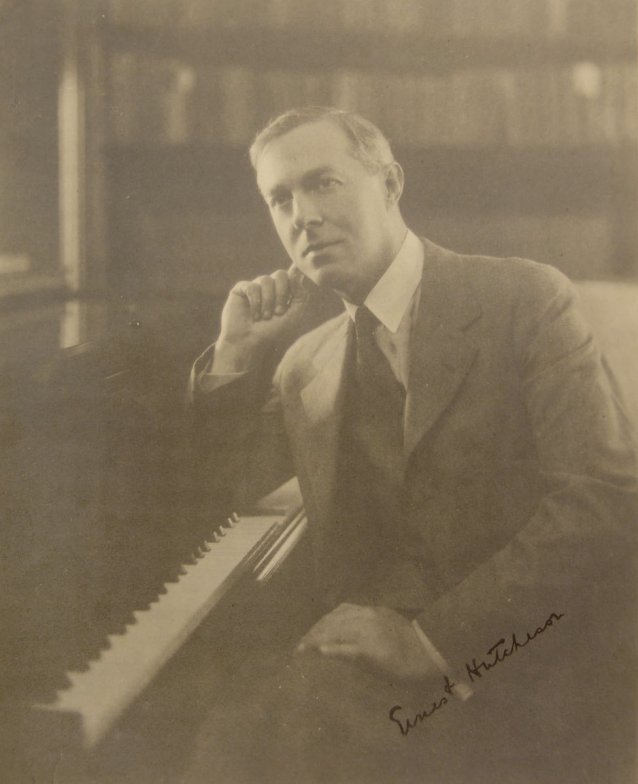Ernest Hutcheson (1871-1951), pianist, composer and music teacher, started performing at the age of five. Aged fourteen, he left his native Melbourne for the Leipzig Conservatorium of Music, where he studied with Carl Reinecke and Bernhard Stavenhagen, a student of Franz Liszt. On his graduation, aged nineteen, Hutcheson moved to Weimar for further tuition in the tradition of Liszt. In Weimar he met Baroness Irmgard Senfft von Pilsach, also a talented pianist. Her family disapproved of their relationship and the couple eloped to London in 1899. Between this time and the outbreak of war, Hutcheson was based in Europe, performing as well as teaching in Europe and the USA. In America permanently from 1914, Hutcheson settled in New York, where he is said to have become the first pianist to play three concertos in a single concert. He taught at the Peabody Institute (John Hopkins University) and the Chautauqua School of Music in New York State. Hutcheson became a member of the faculty at the Juilliard School of Music and was later appointed its Dean (1926-1937) and President (1937-1945). As a teacher, Hutcheson is said to have demanded that his pupils practice four hours daily as well as attend concerts, opera and recitals. By 1932, Hutcheson had taught over a thousand students, including George Gershwin. Hutcheson wrote concertos for violin and piano, a symphony, and many solo piano works; and later in life wrote a number of influential music textbooks including The Literature of the Piano (1950).
Collection: National Portrait Gallery
Purchased 2010
The National Portrait Gallery respects the artistic and intellectual property rights of others. Works of art from the collection are reproduced as per the
Australian Copyright Act 1968 (Cth). The use of images of works from the collection may be restricted under the Act. Requests for a reproduction of a work of art can be made through a
Reproduction request. For further information please contact
NPG Copyright.
















